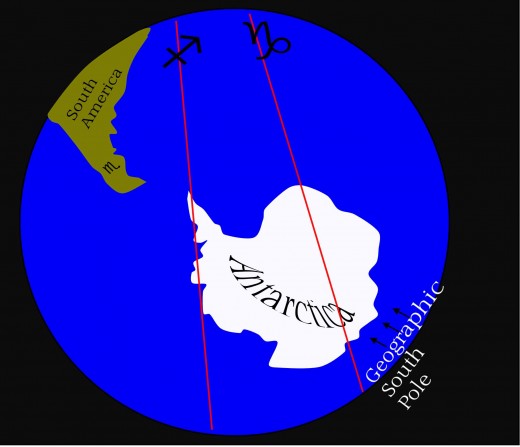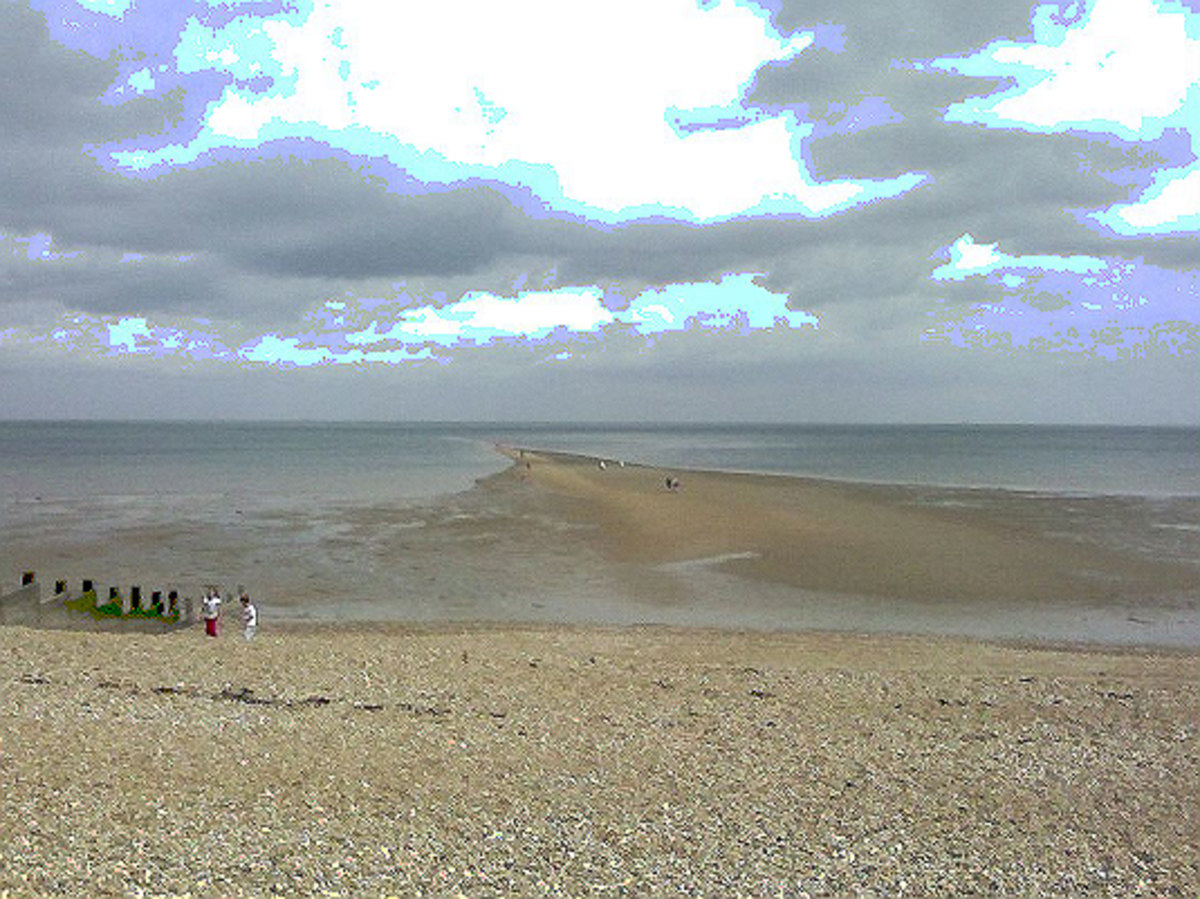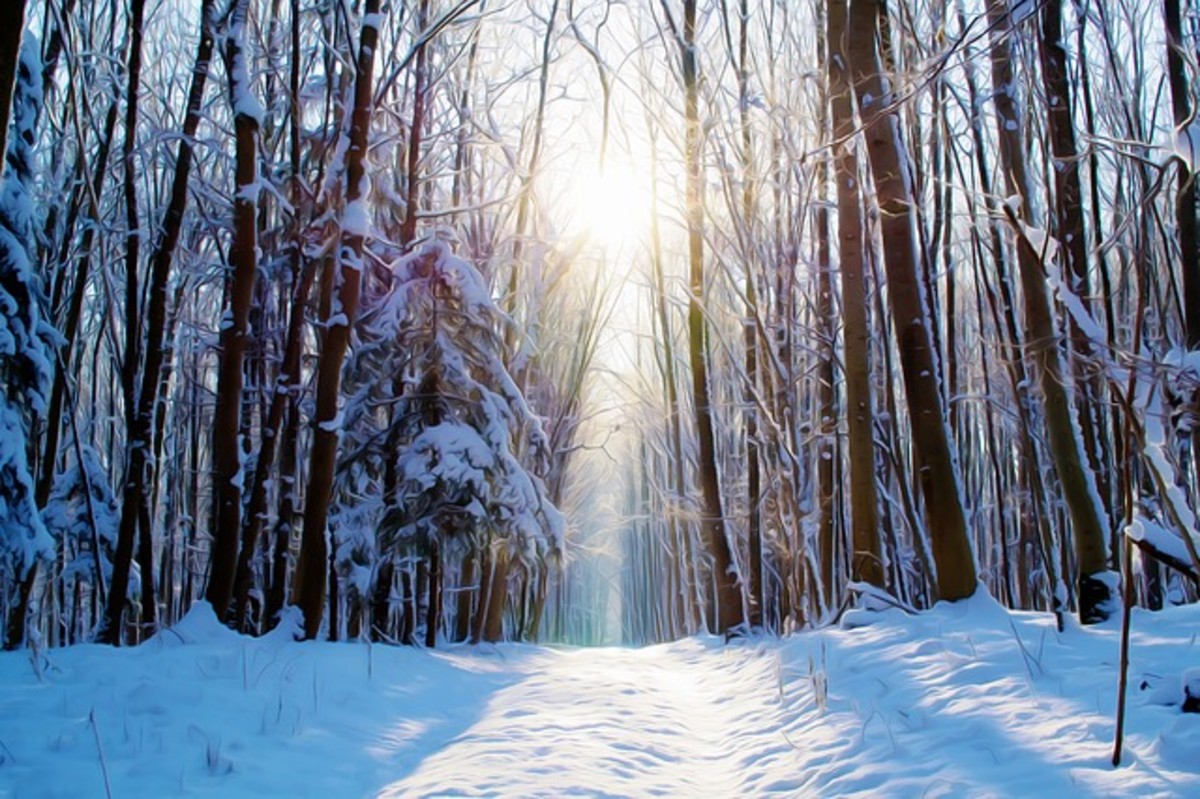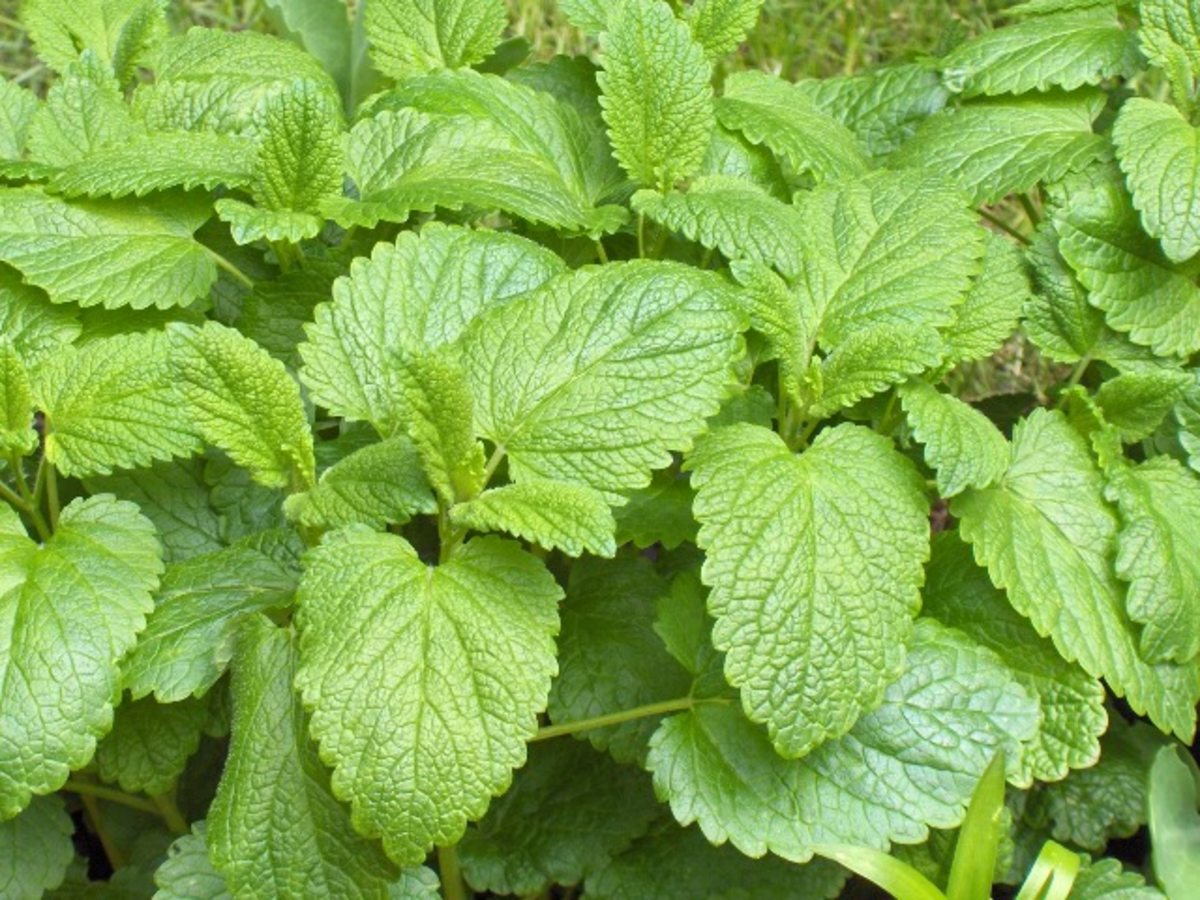The Landscape Zodiac of Britain part 6 The Real Santa Claus
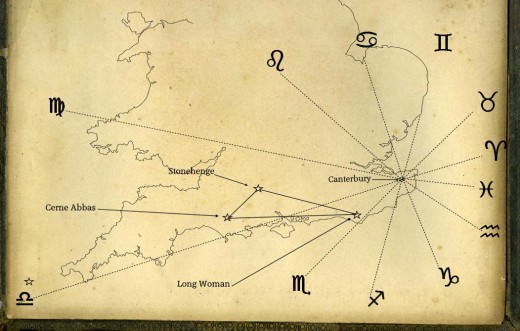
The voyage of discovery lies not in new landscapes, but in new eyes. Marcel Proust.
The place to begin this voyage of discovery, is, I think, a quick re-cap....
After the high-flying Sun of the Summer has fallen through the door marked 'autumn,' aligning with Canterbury (from the Stone-Hinge), he weakens thereafter on a daily basis, growing cooler and sicklier with the passing weeks. To tell the astronomic story, the ancient priesthood told their congregations parables and story's featuring a mighty creature, a stag or a horse, that had been tracked down and wounded with a spear by a cunning, determined hunter. They symbolised the gods in animal form because it was taboo to depict them in human-form - around here. The stag or horse, bleeding profusely from its mortal wound, staggers on for a few more weeks, ever pursued by the hunter. Finally, exhausted, it would creep wounded to its lair, a forest deep or a cave on a rocky hill, and breathe its last, desperate breaths....
The story the priests told was confirmed in full by nature all around. Winter gathers momentum, the evening skies grow redder and redder. The sun-god seems to be bleeding to death and the world grows colder and darker. The priests must have known what they were talking about - how else could you explain the phenomena going on, the dying-off and cooling down? A bona-fide tragedy - for all of nature and all of humanity- the king, the glorious light-of-the-world- is failing. Soon, as the priests foretold in the story, it was obvious what was going to happen.
The Sun - a wounded stallion or stag - rises weakly, further and further south, unable to fully escape the clutches of the underworld, and is dragged back to the horizon, spilling his life blood into the sky, earlier and earlier everyday.
At the end of October he was dragged through the staves held-open by the arms of the Long Woman. And now we are all in the Underworld - all of nature follows the Sun on this journey.
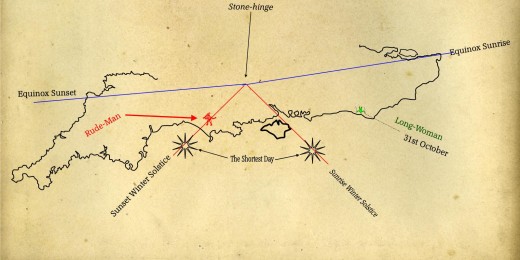
11 days later at the end of the period of All souls, comes Armistice Day which used-to-be called Martinmas or The Feast of St Martin. St Martin was or is the Patron saint of soldiers and prisoners- prisons are Underworlds and as we know, the 11th hour of the 11th day of the 11th Month is very much associated with the tragic dead. But as I say, it's a very ancient rite, or holiday, pre-dates Martinmas by dozens of centuries. A lot of communicating, drinking and eating with the departed ancestors went on. The Christianised version - Martinmas was still a huge scoff-up and mead-guzzle with a big bonfire and great revelry all around (the fire was lit at 11 minutes past 11 on the 11th day of the 11th month). The full significance of the open-staves of the Long Woman is becoming clearer now. The Sun aligned with or 'went through' the 11's of the Long Woman's staves and that moment of Sol's 'passing through' triggered or began this 11 day festival of the dead. Following this big blow-out of the eleventh and right up until Christmas (*Solstice) they used-to starve themselves in the Fast of St Martin, a period now known as Advent.
*In the old Julian calendar Winter-Solstice occurred on Christmas Day, 25th of December.
They would starve until the solstice - like the Sun, stag, stallion - Sol would stop his fall, his staggering toward the south, then, exhausted, stand-still on the horizon for three days and nights... and then - wonder of wonders - move northward again! How can this be? The stag, stallion Sun was dead - he bled profusely and moved not for three days and nights. It must be.... a new Sun, an infant king!
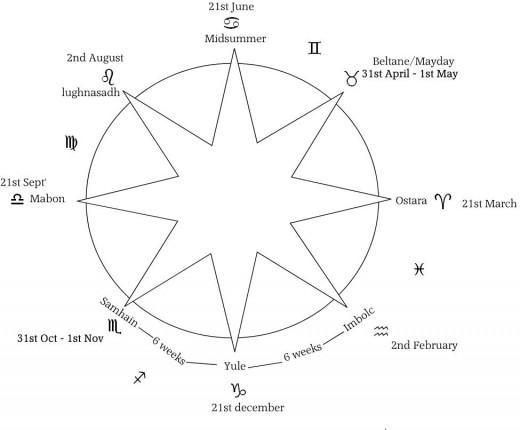
A miracle - the priests were right!
It wasn't until AD 325 that the Catholic Church caught-up with the 'pagan' insistence on this death of the stallion, stag, old Sol, and rebirth as a foal, hart, new-Sun, and made Solstice the official birthday of the lamb, Jesus. They weren't as daft as they looked.
Many cultures had their 'saviours' born on this day - the early church realised early on they had to comply, or no-one would believe in their new saviour. So Solstice or yule as we called it, became re-branded as the Mass of Christ, Christmas.
Attis was a son of the virgin Nana. His birth was celebrated on Dec 25. He was sacrificed as an adult in order to bring salvation to mankind. He died about Mar 25, after being crucified on a tree, and descended for three days into the underworld.
Dionysus is another savior-god whose birth was celebrated on Dec 25.
Mithra was a Persian god commonly found throughout the Roman Empire, Mithra was born on Dec 25. His birth was witnessed by shepherds and by gift-carrying Magi. This was celebrated as the "Dies Natalis Solic Invite," The "Birthday of the Unconquered Sun."
Which brings us, in a round-about sort of way, back to the apparent death and rebirth of the stag, the stallion otherwise known as the Sun, at Winter-Solstice.
I think it sort-of significant that on this shortest day of the year, when poor-old Sol is completely at the end-of-his-tether, totally knackered, he rises over the Solent and the Isle Of Wight (see my diagram).
This is sort-of significant because 'Old-Sol' is tired-out, he can hardly get-up in the morning any more - barely lift his own weight - you'll remember that one of the meanings of the island's name Wight is Weight. On winter-solstice the Sun - once he's managed to get that weight airborne, goes up on what is his shortest flight, or faltering trot of the year, just eight hours in the sky - and not very high, either . So Sol - starving or fasting and very weak - rises and sets over the stretch of The English Channel known as The Solent.
That's Sol's Lent, as 'Sol' is of course the Sun, and 'Lent' is a period of self imposed hunger, a fast. The Fast of St Martin, begun on 12th November each year - Advent - ends today after 40 days and nights of virtual starvation.
Were they ready for something to eat by Christmas, or what?
There are two zodiac signs involved in the phenomenon known as Winter Solstice - the sign of the arrow (going south) and the sign of the goat (returning north). As the arrow of Sagittarius flies through the dying moments of the year, the days get shorter and we get the feeling that time is running-out- and it is- for the Sun and the year. At Winter-Solstice the arrow hits the target- it- and everything in our local cosmos, comes to a resounding standstill.
From the Stone-Hinge, druid eyes followed the golden-arch of the Sun's weak-rise over the diamond-shaped isle of the Weight, and 8 hours later its all-important fall into the Underworld - and the Yule-logs were lit to keep away the darkness and the denizens of the Underworld.
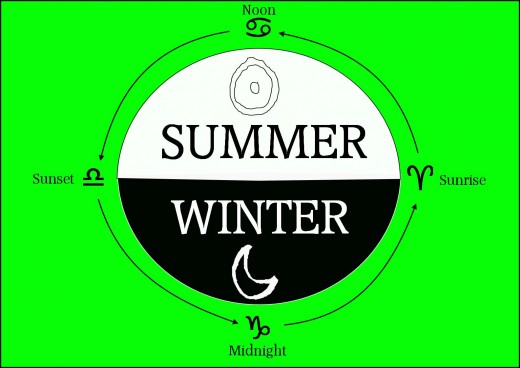
Concise AS Dictionary :- Wiht
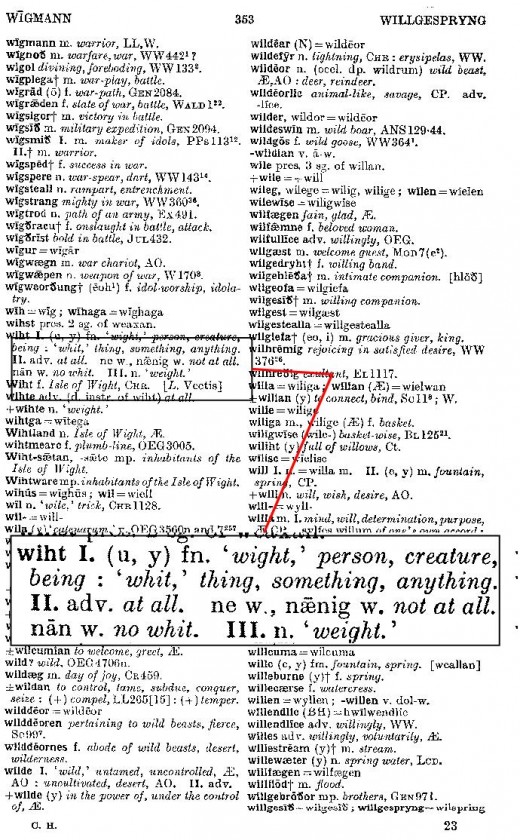
But you'll notice from the AS Dictionary inset that Wiht as in Wight, has other meanings too - as I referred to in the previous article Halloween. It also means a person or being.
I went to the Online Etymology Dictionary to see what I could find there....
Wiht: O.E. wiht "living being, creature," from P.Gmc. *wekhtiz (cf. O.S. wiht "thing, demon," Du. wicht "a little child," O.H.G. wiht"thing, creature, demon," Ger. Wicht"creature, infant."
Could the Isle Of Wight- the place over-which the Christmas morning sun rises- have meanings attached to its name that could be more appropriate than these...an infant... a living being...? Well, pin back yer lug 'oles... the answer is 'yes.'
The so-called Beaker People named the island Veho, meaning, according to the experts, ‘raised above the sea,’ or ‘what rises,’ in Beakerese. This has always been virtually meaningless to anyone trying to decipher its meaning.... they say it must be a reference to the island's high cliffs. But, as I've been showing you, this island is THE place where the Solstice Sun rises over the sea. Mystery solved, I believe. The following facts do nothing to dissuade me.
Along came the Romans and renamed it Vectis, which is, according to The Online Medical Dictionary Mondefacto:
Vectis: An instrument resembling one of the blades of an obstetrical forceps, used as an aid in delivery by making leverge on the presenting part of the foetus.
Origin: L. A lever or bar.
You couldn't make this stuff up. We have here a diamond shaped island that was associated - in the minds of the eld and astronomically - with Christmas Morning Sunrise and an infant being born with the help of a lever or forceps. It is also pictured as a weight that has to be levered-up out of the Underworld (the womb) into the sky. And the thing about it is that this island was given its name and the meanings associated with that name by the Beaker people - these people have been associated with Stonehenge too. No-one can deny that the Beaker people were pre-Christian - and here, encoded into the British landscape is the evidence that they were telling a story about an infant being born on Christmas Morning.
And some of the place-names on the island reinforce this idea, Bembridge for example. 'Bem' the prefix has several related meanings: beam (a tree) and beam, a balance-beam or lever. As for the 'bridge' part- we have to think of the goddess Bride, Bridget, Isis and of course, Mary. If you recall, Bridget was relegated to the position of 'midwife to the virgin,' no longer the starring role but an important enough job in the cosmic scheme-of-things. So Bembridge's name seems to be translatable as Bridget's Forceps or Lever - in fact, as The Midwife's Forceps. What are the chances of that eh?
Now, what animals were in the stable or Mithraic cave when the divine infant was delivered? His cradle was in their 'feed-trough,' of all places... I feel a carol coming on... the cattle are lowing, the baby awa..k.es -. That was it! Cowes! The name of the yachting town on the island.
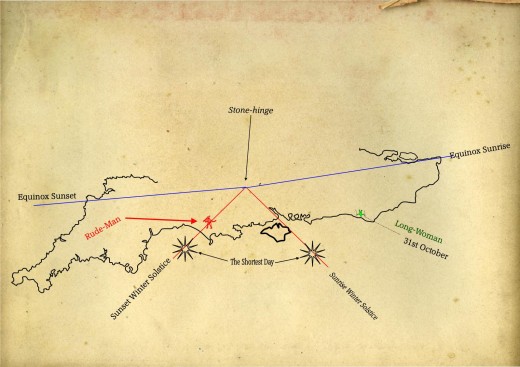
- VECTIS INSVLA
Vectis Insula - Isle of Wight
I understand if you think I'm taking this all too far... interpreting Cowes as referring to the cattle in the Nativity. But there's something about this island, and the more I look at the place-names and topography of the island, the more I'm convinced. I know I should get out more.
The diamond-shaped island has a trinity of rivers called the Eastern Yar, the Medina and the Western Yar.
The name that jumps out - because of the highly obvious 'eastern-religion' connotation, is the River Medina. That name must-have baffled the toponomysts for decades, if not longer: How odd to find such a name here...what could the connection be...?
The name of this river in Southern England over which the sun rises on the morning of the Nativity Story, just happens to be the name of a Saudi Arabian City that houses one of the holiest shrines in Islam. A nativity juxtaposed with the shrine-of-a-holy-man, I'm sure they had a reason for that...
I copied and pasted this from Wikipedia:
Medina's importance as a religious site derives from the presence of the Tomb of the Prophet Muhammad inside Al-Masjid al-Nabawi or The Mosque of The Prophet. The mosque was built on a site adjacent to Muhammad's home, and as Muslims believe that prophets must be buried at the same place they leave this mortal world, Muhammad was buried in his house.
They were very clever, very subtle, our ancestors- and now we know what that connection is - the death and birth of the Sun (Son).
Orthodox toponomysts tell us that Medina's name means in the middle, referring to the fact that the river is 'in the middle' of the island. But it's in the middle of other things too... astronomical, annual, seasonal... the middle of the night, the Underworld, the Winter. The modern connotation of Wight is usually to do with the shade of colour white - and something coloured white remains..... visible on the darkest of nights.....appropriateness piled on top of appropriateness.
When the sun stands still on the horizon, for three short days and three long nights, it is cyclically speaking,'in the middle' ie: half way 'round the wheel - at the beginning and end (Alpha and Omega) of the annum, reversing direction - south to north - Sagittarius to Capricorn.
The names of the rivers on either side of the Medina are the Eastern and Western Yar- Yar is missing just one letter to make perfect cyclic, seasonal sense - the letter 'e.' Then 'yar' becomes 'year.' As I just said - this island and these three rivers are at the beginning and end - the middle of the year. So, their names would mean the 'Eastern Year' and the 'Western Year'....
I figure that the Eastern Year refers to Sun-rise and Western Year to Sun-set - the beginning and the end - Summer and Winter - life and death. And you see, this island is the place over which the Sun changes from one state to the other. Yesterday, Sol was moving in the direction of Winter, but after these three days have passed he will be moving the opposite way, in the direction of Summer.
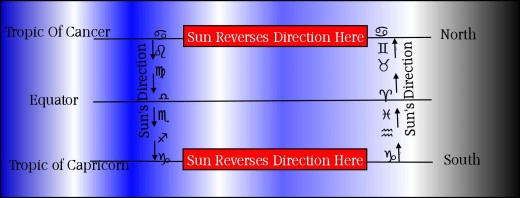
And this place where the year is divided in two, has this fact spelled-out in quite clear terms by the official emblem of the island. I surfed to the website Roman Britain Dot Org, where I found this snippet:"Wight, Isle of (the county). Vectis c.150, Wit 1086 (DB). A Celtic name possibly meaning 'place of the division', ............" (Mills)
The official flag or emblem for the island shows it as a diamond - rising over the sea! Seems that somebody might know something about all of this then...? Nah, just a coincidence, I'm sure.
The diamond shape also suggests (to me) the four-quarters of the solar-year; Winter-Solstice; Spring Equinox; Summer-Solstice; Autumn Equinox; or the four cardinal signs; Capricorn; Aries; Cancer; Libra; and the four places at the cardinal extremities (all of them islands) Isle Of Wight; Isle Of Thanet; Orkneys and the Isles Of Scilly.... a diamond... a star?
The Division
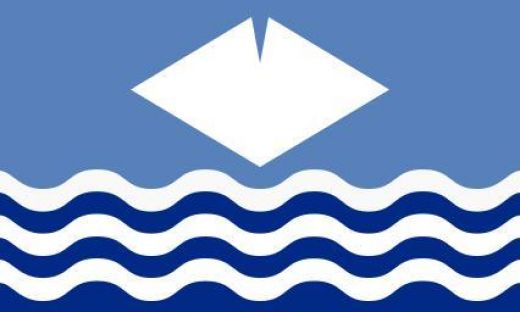
__follow__ that__ star__
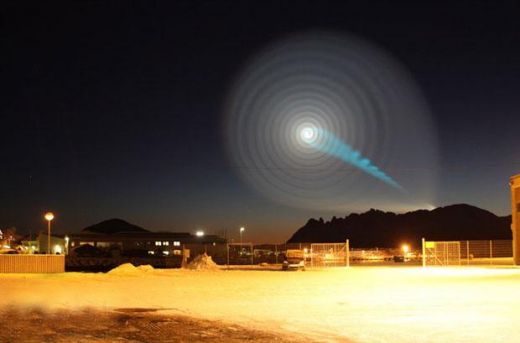
Winter Solstice Sunset was viewed as one of the most important astronomical events on the ancient's ritual calendar. For this is the beginning of the longest night of the year - surely the time of greatest mystery - and even greater magic. For, as the ancient's described for us with the clever design of the Long Woman effigy, the reason for all this concentrated mid-Winter darkness is that we are - at this time of the year - within the womb of the goddess. It has to be dark in the womb doesn't it?And the magic? Where is that?
That won't be evident for three sunrises.... and then the priests will announce it.... he moves to the north! He lives! And now the celebrations would begin - for there IS something to celebrate, isn't there? Another Day. Another Spring. Another Summer. The king is dead! Long live the king.
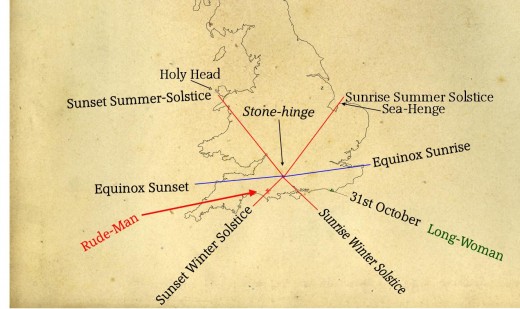
And the landscape furniture speaks - no, shouts - volumes. The things they installed in the fields of Olde England in pre-history to mark the sunset on this night of awesome magic, reveal to us, if we read their message correctly, the very essence of their faith, their teachings, and the roots of all religion. It's a message worth reading.
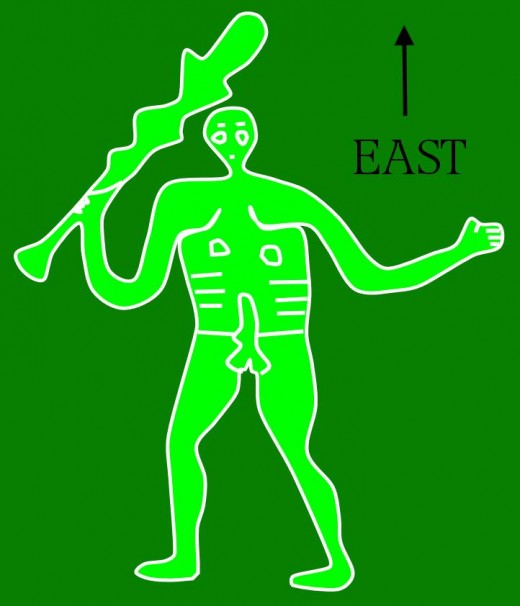
As you should be able to work out from my nice-picture above, on this most magical sunset on the ancient's calendar, for the observers at the astronomical observatory the Stone-Hinge, as the sun reached the horizon over Chesil Beach ('chesil' = chisel) it also aligns rather nicely with the big-dicked effigy - Long Woman's old fella - the Rude Man, 38 miles distant from those observers at The-Hinge (3 + 8 = 11).
So, at least we know what the Rude Fella's doing there now, dun we? 'Cos, as I've said somewhere before, no-one (as far as I can see) has got the slightest idea what this figure's really here for or what it really means... or who it really represents.
But as I'm telling ya.... he is an alignment marker for the sunset at the beginning of the longest-night of the year- the real beginning of Yule or Christmas, I believe.
And he-hee-he... you're gonna LOVE this - you really are. I've worked-out who this well-hung dude is - the Rude Man MUST BE the one-and-only.... the original.... Santa Claus!
I knew you'd like that. It tickles me, it really does - when you look at all the ramifications - if that's the right word...which we'll get to in a while. Though I will say that Santa's probably not what they called him. I have a nutty-notion he might have been called Cornucopia.. or something similar, for reasons I'll get-to later.
But before I get into the why's and wherefores about the Rude Man being Santa Claus, I ought to tell you the rest...
As you can see, when the Sun sets on Winter Solstice in alignment with Rude Man, it is also forming an alignment with the so-called Seahenge on the edge of The Wash, in Norfolk 160 miles from The Hinge, and 198 from Rude Boy. Given the season and the day I think I can now make the statement that I think I know what this upside-down evergreen oak is... the original Christmas Tree!
I'm serious, we've got Santa Claus and a Christmas Tree here.
An artist's impression of how Seahenge may have looked 4000 years ago
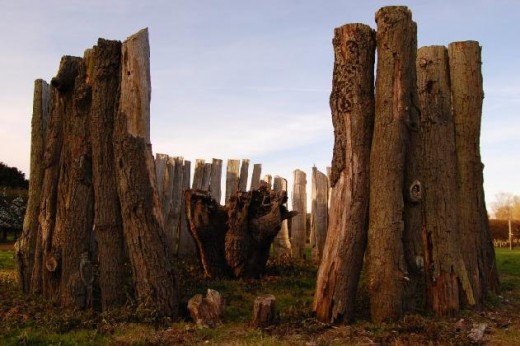
What is Seahenge? I've copied and pasted this paragraph or two from Wikipedia:
The site consisted of an outer ring comprising fifty-five small split oak trunks forming a roughly circular enclosure around 7 by 6 metres (23 by 20 ft). .... Their split sides faced inwards and their bark faced outwards (with one exception where the opposite is the case). One of the trunks on the south western side had a narrow Y fork in it, permitting access to the central area. Another post had been placed outside this entrance, which would have prevented anyone from seeing inside. The timbers were set in ground to a depth of 1-metre (3 ft 3 in) from the contemporary surface although how far they originally extended upwards is not known. In the centre of the ring was a large inverted oak stump.
South West is of course the direction of Stone Hinge, the Rude Man and the setting Midwinter Sun. The light from the setting Sun would have been permitted to enter the enclosure at this special time, and the last light of the year would have illuminated the roots of the tree. I wonder why no-one noticed that?
The experts say that Seahenge (see artists impression from Aquarium Of Vulcan) was planted upside-down with its roots sticking up, around the same time as Stone Hinge was positioned there and calibrated to our local cosmos (3100 - 200 BC) . The same experts doubt that Seahenge and Stone Hinge are otherwise related - even though someone dubbed it a henge that stands in the sea - but it wasn't in the sea when placed there so it's an inappropriate name on that little matter alone. It's also an inappropriate name for the upside-down tree because this is not - like the one on Salisbury Plain - a hinge. This is more like the post that says to the stallion, stag, or Sun.... STOP! Turn around, go back - because as you can also see from my pretty pictures, this upside-down tree is the Summer Solstice alignment marker from The Hinge to the rising Sun.
Fancy that!
But we're looking at its role in the opposite condition - Winter Solstice - when the setting Sun of the longest night aligned with and, er, illuminated - through the only opening in the construction, the roots of the upside-down tree, inside the enclosure.
But before I go any further, I think I'd better tell you what makes me so sure that this upturned oak in the centre of the circle is an evergreen tree - when the scientific community who examined the tree merely called it 'an oak.'
That was a signal (to me) that they were not revealing all - 'oak' is hardly a scientific description - there are dozens of species of oak. I wondered why they were so lax on this (I can't help myself - mental note: Go out more).
They gave some hair-splitting details - like they do. They told us the exact month and year when the big upside-down oak was uprooted, AND when the 55 split-oak posts that surrounded it were chopped-down. These small split-posts were identified very precisely as English Oak, grown quite locally. But absolutely no hair-splitting details on the big boy - I wanted some.
The scientists reported that dendrochronology (tree-ring counting) had been used to date the smaller posts - but they'd HAD TO use carbon-dating for the big tree because..... (wait for it.......) the tree-rings failed to match the known tree-ring patterns in England at that time!
Aha! There's the answer.
They've just admitted that the big-tree was NOT an English species.
For the scientific bods to publicly admit that it was a foreign species of oak would be flying-in-the-face of everything they hold-dear. They'd be admitting that prehistoric English-folk had the ability to go far, far afield, select a tree they wanted, uproot it from the soil where it grew without cutting or damaging the roots, and then transport the whole tree - undamaged - back to the desolate shore-line of The Wash, where they dug a hole big-enough to plant it upside-down, roots upward.
No-Way Jose - there's no way they're ever going to admit THAT.
And that's why I'm so certain - no - that's how I know it's an evergreen oak - a Holm Oak. At the time of its up-rooting the most likely region to find such a tree would have been in the Mediterranean - somewhere with a warm (or warmer) climate like northern Spain or southern France - it was just too chilly in southern England.
And there's this to consider too:
This upside-down tree and its oaken enclosure stand at a place called Holme Next The Sea. The bog-standard interpretation of this place-name is that a 'holme' is a small hill (or islet),' as shown (for example) at Etymonline.com, where I found this:
Holm: late O.E., from O.N. holmr "small island, especially in a bay or river," also "meadow by a shore," or cognate O.Dan. hulm "low lying land," from P.Gmc. *hul-maz, from PIE base *kel- "to rise, be elevated, be prominent; hill." Obsolete, but preserved in place names. Cognate O.E. holm (only attested in poetic language) meant "sea, ocean, wave."
Common-sense tells me that here, the prefix 'holme' must be a reference to that upside-down tree, a holm next to the sea - unless my imagination's messing me about again... (seriously might get a paper round...)
___The__ World__ Tree__
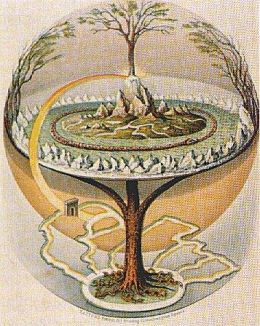
I believe that the enclosure would - for those reasons - have been roofed-over, to keep those roots in darkness until the appropriate moment - sunset Winter Solstice. I've put an artists impression of Ygdrassil, the 'world-tree' or tree-of-life here to demonstrate what's going on here at Holme-Next-The-Sea. You'll notice that the upturned roots of the tree on one level, support the roots of the tree in the level 'above.'
As I've described in my ham-fisted style, the Sun was a wounded animal and was about to die from his wounds.... so those last rays of light were the last drops of the stallions or stags life-blood. Those spatters were being directed onto the roots of an evergreen-oak whose branches and leaves opened into the Underworld. This blood would fructify, kick-start the tree into activity, into the life of the Underworld, where the ancestors dwelt.
For they knew that only this could save the world from the darkness. For the three-worlds supported each other. I believe they would do this for three Sunsets - sufficient magic, as past experience told them. For they knew from this that by the fourth morning, the divine creature would be born anew, and move along the horizon again. The beautiful-one would take infant steps in the direction of life - so long as they caught those dying breaths of the old-one, and fed them to the ever-green tree.
Now though, let's go flying south-west in the direction of that all-important Sunset, via the Stone Hinge.... and 38 miles further in the same direction is the effigy known as the Rude Man. Now, as I said above, this is the original Father Christmas. There's several ways to prove it..... his name is one of them. How long the figure has been known as 'rude' is an unknown - but I imagine the name to be as old (probably) as the figure. Now.... we might like to think that 'rude' is a reference to his..... er, ample appendage, and we wouldn't be totally wrong about that. But 'rude' is also the origin of our modern word for the colour we associate with Santa - red. So Rude Man is the Red Man. It doesn't take a genius to work-out then, that because the Red Man is the alignment marker for the Winter-Solstice Sunset, which used to be Christmas, then this bloke with the big wotsit must be Santa Claus - the original (because prehistoric). Puts a slightly more 'nudge nudge' aspect onto Santa's Sack now, don't it...?
Concise Anglo Saxon Dictionary: corn
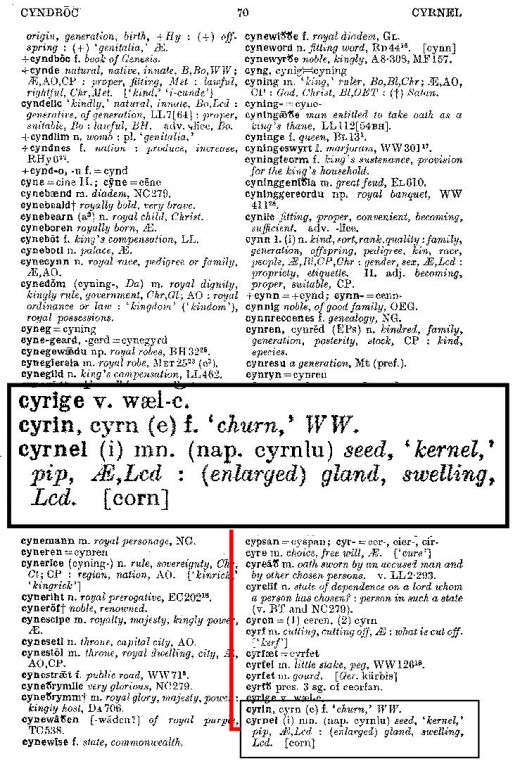
And we don't have to think too hard about the nature of the gifts he brings..... fertility, procreation, life - and no doubt a few good-times..
The 'club' he wields in his raised hand can now be correctly interpreted too - probably for the first time in a couple of thousand years..... and I haven't even had my breakfast yet.
Y'see, because he stands there to mark this darkest time of the year, that 'club' must be a flaming torch, mustn't it? A yule-log I'll be bound..... to light the way through the abyss of the longest night. He is a sign of hope.
Ah yes - the abyss.
The 'proper' name for the Rude Fella is the Cerne Abbas Giant - because that's the name of the village nearest by. I've heard folk mispronounce the name as Serne Abbas.... but it's a hard 'c,' and it's pronounced Kerne Abbas. That's important 'cos it sound much closer to its intended meaning....
And there are several of those. Inter-linked and over-laid on each other and the Rude 'un. In ancient days all grains and seeds were called 'corn,' and that was meant here..... seeds..... 'corn' was also the word for the cornucopia - the horn of plenty. Of course that's a naughty double entendre... referring to his 'equipment,' and to the cornucopia which was only brought out at celebratory times, stuffed to the brim and overflowing with all the good-things in life, luxuriously shared with ones family and friends. That sounds like a Christmas bash to me..... and there's more.... another meaning for the ancient word 'corn' is..... (believe it or not) an enlarged or swollen-gland.
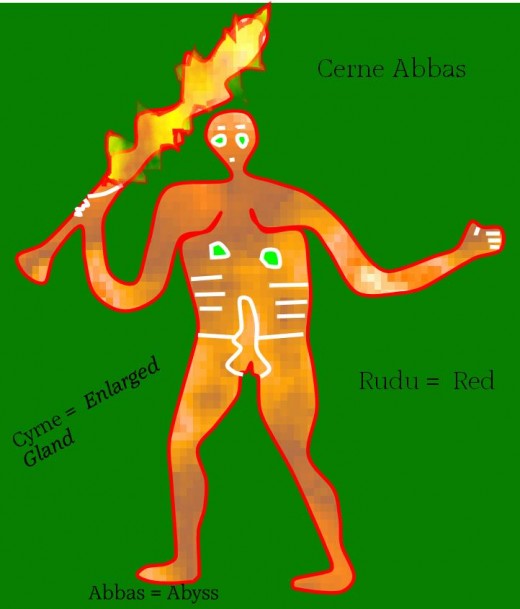
Funny that may be.... but this was no joke to our ancestors.... this was an important symbol to them, at the very heart of their 'religion,' if that's the right word.
The second part of the place-name is signal too.... yields further clues as to the real meaning of this well-hung chap who's lain there in the hills so misunderstood. Abbas means abyss - another double entendre. I went to Etymonline.com again: Abyss: late 14c., earlier abime (c.1300), from L.L. abyssus "bottomless pit," from Gk. abyssos (limne) "bottomless (pool)," from a- "without" + byssos "bottom," possibly related to bathos "depth."
The longest, darkest night of the year is the abyss, innit? That's why he's got that flaming yule log in his hand... he's gonna guide us through this pit of doom and watch over us. And... as mentioned elsewhere.... this abyss or Underworld was pictured in the minds-eye of the ancients as the womb of the goddess. Now.... 'corn' or seed has to be in the dark or else it ain't gonna germinate, won't start to grow. So in that sense the Seed In The Abyss or.... the Light In The Dark or Cerne Abbas is a fertility motif.
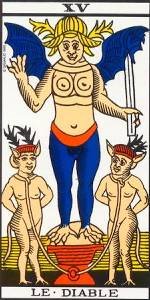
It's possible that I'm misreading or misunderstanding the signs in the landscape... but it's just possible that I've got it right. ... this moment of the darkest-nights was or represented the moment when the seed (cyrn - corn) entered the soil, was implanted in the womb of the Earth Goddess. Nine Months later when the Sun is in the sign of the virgin, Virgo, a birth will come (Sun enters Virgo September 21st).
The reason that Mid-Winter was divined as the actual moment of this impregnation was - I believe - that Sol remains very low, closest to the horizon than any other time of the year - the lovers (Sun and Earth), can hardly be separated. It seems to my mind that as Sol 'died' and his last drops of red-light spattered onto the roots of the upturned evergreen - a sort of 'transfer' of power takes-place..... the power, spirit or soul of Old Sol is transferred to the Underworld via the tree roots..... the Underworld tree lives..... Sol (soul) travels through the 9 levels of the Underworld on these three nights..... and on the third morning when the red-orb escapes the underworld and rises over the Solent - the miracle had occurred - in the darkness - in secret. A new Sun (son) is born.
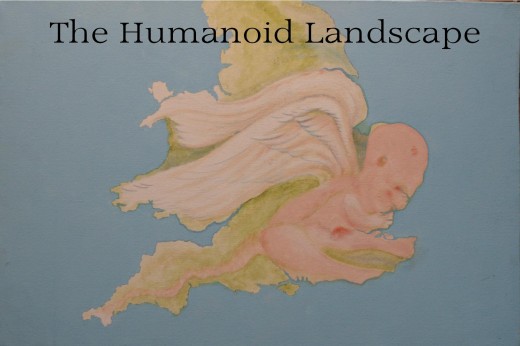
And... as ever, there's yet another way to explore all this.... symbolism encoded into the landscape. There's the Humanoid way..... y'know, the way where we look at the south-coast of England as a giant infant's backside - y'know, the winged one that my book The Humanoid Landscape revealed. You can get it on Amazon now. It'll amuse you at the very least - it's only a tenner. On the other hand it might do to you what it's done to me..... he he :-)
This giant infant with wings lies behind it all. I do mean that sincerely. An example would help....
How about this.... this Sunrise on Christmas morning or Solstice marks - as I said - the beginning and end of the annum (Latin word for 'year'). The word for the human anus comes from that word, Etymonline puts it like this: Annular: ring-shaped," 1570s, directly from L. annularis "pertaining to a ring," And: Anus: "inferior opening of the alimentary canal," from L. anus "ring, anus," from PIE base *ano- "ring." So called for its shape.
Well... the reason I'm going-on about that, is because on the morning in question (Solstice Sunrise) the Sun shines-out of the infant's anus!!!..... another entrance to The Underworld...... and another way of understanding the upside-down evergreen tree - and what it all means. A picture or two might help me out here....
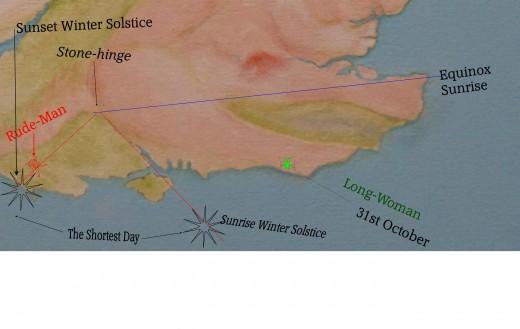
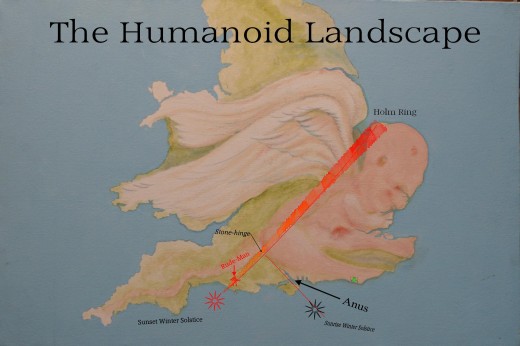
Some people suspect that I've got it all upside-down, inside-out and back-to-front. 'Cos I reckon that the Latin word for the year, 'annum,' comes from this giant-infant - that the Romans and virtually every other ancient culture on the face of the earth knew about this angel/cherub/whatever. I honestly believe that most religious ideas that existed then and still exist today, are based on this winged baby and the Solar/Lunar alignments that occur within its corporeal form. The Sun shines out of the infants butt and the Latin for 'year' is annual - or anal. Is it any wonder I think what I think?
As in the previous articles in this series, we should have a quick look at the global implications of all this - but before we can do that we have to go to the other part of this thing in the landscape, the zodiac wheel spindled in Canterbury - a wheel not based on solar/Lunar alignments such as we've looked at here, but based upon the directional attributes associated with the signs - and the landscape morphing caused by the zodiacal sign's 'influence,' along and within the alignments. Phew, that was a gob-full.
So, to Canterbury...!
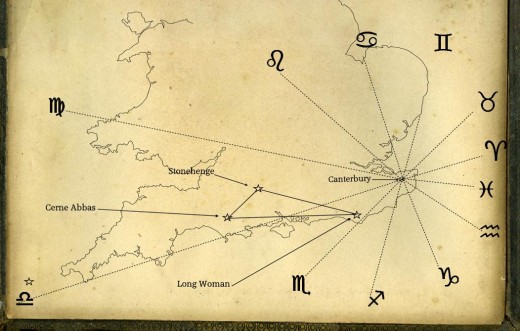
A very-quick recap is in order hereabouts: At Autumnal-Equinox the Sun enters the sign of the Devices, Libra. As we discussed, it then went into Scorpio and 10 days later it was Halloween, followed 11 days later by Martinmass and then Advent - the 40 day descent into the Underworld. When seen from the perspective of Stone Hinge and our landscape, it becomes clear-as-day that during this phase of the year the rising Sun is indeed 'under,' y'know, south. We see Medieval maps where East is 'up' and North is where we put West, and are led to believe that North being 'up' is a clever, modern invention. But it's a matter of semantics. I'm certain that, because of our landscape, South was 'down' and North was 'up.' I don't think we can rely on Medieval cartographers for an understanding of truly ancient thinking. And, when it was mid-Winter they said that the Sun was Under. In the Underworld.
So, as I was saying, the additional way of looking at all this is from the zodiac wheel in Canterbury - the two wheels Canterbury and Stone Hinge interact, and the Canterbury based wheel has global effects..... hard to believe really, innit?
So yeah, in my descriptions so far I've sort-of skipped the sign where Advent mostly occurs - Sagittarius, the sign of the arrow. Seen from the Stone Hinge the alignments made to the Sun during the sign of the arrows 'tenure' are all along the Underworld (south) coast, as you can easily work-out from my several diagrams above. There are many hours of linguistic amusement to be had investigating this coast where the Sun rises in Sagittarius, but this article is already a wheel-barrow-full and we have - like the arrow itself - to get a move-on. The investigation of the individual places and their names I'll have to leave to you. And that's one of the things I really like about it - it's a never-ending story. The more you look at the landscape, the more there is to see - it's fractal - there's always another layer of meaning.
After the rot and death experienced in 'fixed' Scorpio, 'mutable' Sagittarius ushers in the cardinal winter of Capricorn. The sign of the rainbow rules over the hours from 10pm till midnight- the time when the unconscious human-being is shot- like an arrow- out of the sleeping body into the astral-realms of dream and vision. Or, after the death of the physical body in Scorpio, the arrow of Sagittarius represents the flight of the spirit to the astral planes of the after-life. It is the sign of alchemy- the sign which governs the processes of transforming leaden-dross into gold. The part of the body it rules are the thighs and hips.
Its symbol used to be half-man and half-horse - a centaur - who held a drawn bow and arrow in his hands. It then mutated, lost its equine part, and became the torso of an archer holding drawn bow and arrow. It mutated again and the man disappeared entirely, leaving just the bow and arrow. and now there is just a fragment of the bow and the arrow-head. It is a symbol of spiritual evolution- first we see the animal and human nature in partnership, equals. Then the animal-instincts fade away and are replaced with the purely human-being; even the human-nature disappears now, leaving nought but the tools for advancement. Now all that remains is the arrow head - symbol for aspiration over ambition and one-pointedness of being. As you can see, the Sagittarius alignment from Canterbury just happens to align with 'Britain's Only Desert,' the arrow-head in whose pointed tip are two nuclear power-plants, Dungeness.
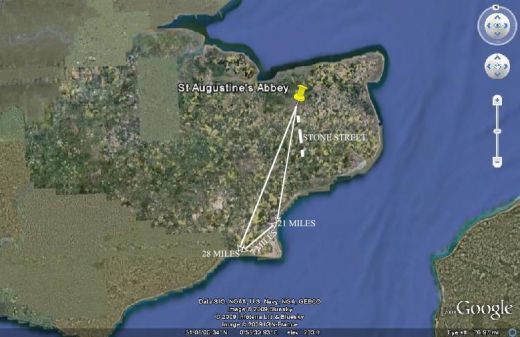
This 'arrow-head' or blade-tip that sticks out of the south-coast is as much of a mystery to the experts as The Street in Whitstable, the silver-thread that lead into the discovery of this thing in the first-place. There is NO good scientific explanation for its existence and even less of one for its endurance. It baffles them! Here's an excerpt from the Berm Team, who investigated the erosion of the south-coast for Sussex County Council.
‘Doubts can be raised concerning the theory that erosion of the chalk cliffs has supplied most of the shingle to East Sussex beaches. The large shingle foreland of Dungeness is composed almost entirely of flints. Is it realistic to suppose that all this shingle is derived from erosion of the chalk sea cliffs? Has it really travelled so far along the coast? (.....)
(... ....) An (experimental) cobble recovered after three weeks on Telscombe beach recorded a weight loss of 4.4%. If this rate of wear continued, the cobble would diminish by over 50% in 9 months and would be totally destroyed in just under a year and half of exposure on the beach. How does it all add up? With around 700 tidal cycles per year (note that number), quartzite pebbles could be expected to lose about 5.5% of their weight per year. In other words, with continuous exposure they would be likely to disappear in less than 20 years. the life expectancy of flint shingle in the surf zone on the Sussex beaches may be less than 200 years.
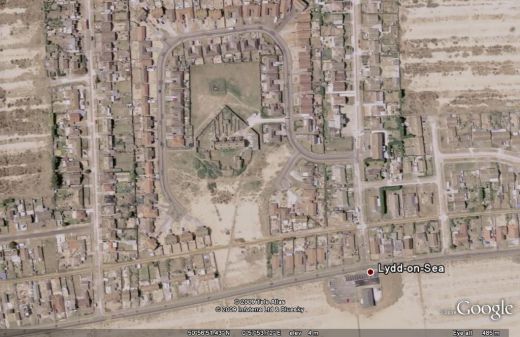
The arrow-head of Dungeness then, shouldn't logically even be there. - harmonic-resonance is the key. The 'arrow-head' of Dungeness is the naturally-occuring 'reflection' in the physical, material-world of a phenomenon known as the Sagittarian-energy of the zodiac. There is a pattern, a Morphic Field which holds existence - reality - in place, prevents it 'dissolving,' or losing its 'shape,' and it is the zodiac. Hard to swallow isn't it? Flies in the face of everything our scientists tell us.
Hythe = height?
Within the spear head is a town called Lydd, a name that translates into our ancient tongue as the metal lead, that heavy-weight used to add mass to an arrow head- an ancient version of the depleted uranium missile- allegedly used purely to add weight. I've put a Google Earth image here to show you how the town is laid-out - it's an arrow-head. Did someone in the planning dept' know about the landscape zodiac? Or does the energy of the pattern affect those planners unconsciously?
The town originally bore the name Hlyda, which according to local historian’s derives from the Latin for shore; this name was found in a Saxon charter dating from the 8th century. In my book, Hlyda or Lydd, and Hlytta or Hythe, are one and the same Anglo-Saxon word meaning astrologer, diviner, soothsayer. Sagittarius is the sign of religion, philosophy and higher (hlytta) learning- as differentiated from Sagittarius' polar-opposite sign, Gemini, the sign of primary-education.
But Hythe is probably just another Norman Domesday-Book misunderstanding of a common enough English way-of-speech - such as: 'length, breadth, width and heighth?' Heighth is appropriate enough when discussing the flight of an arrow, for example.
On the outskirts of Canterbury within and directly on this alignment is the St Ames Sports Clinic. Not only is Sagittarius the sign of games and sports - but aims is what a good marksman does before he looses his arrows. And Ames is just another word for the Sagittarian mission- aspirations - or aims.
I'll just give you a few of the place-names in the zone, but it's just a taster.
Playden is actually the name of a town - perfectly Sagittarian isn't it? it's the sign that governs sports. A sports arena is a play den.
Robin Hood Lane. (a famously good archer).
Harden Road: hard end (describes a spear tip)..
Tourney Road: a 'tourney' is a tournament, a joust.
The Dowels.
The Stocks (stock is another name for the shaft of an arrow, as is a dowel).
Southwest of Lydd is a large military training camp and firing ranges. It was set up in 1881. The high-explosive ‘lyddite’ or ‘pyrric acid' was first tested here in 1888, taking its name from the town.
So... this leaden spear-tip is explosive! But we can even top this exploding spear-head, as Dungeness A and B nuclear power-stations are both right in the tip of the arrow - it's a nuclear warhead no less! Incredible, no?
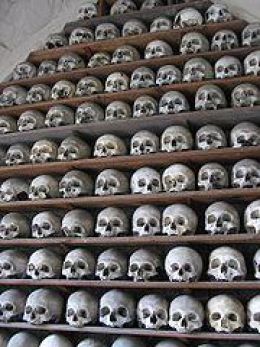
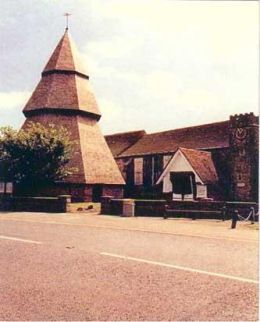
The 11th century parish church of St Leonard contains an ossuary (a bone store) packed with 2,000 skulls and 8,000 thighbones. Sagittarius is the sign of the thigh. In England, bone-stores such as this are very rare- unheard of in fact. This must give cause to wonder why- in this sign of the thigh - next door to the sign of the bones, the ancients decided that here was as good a place as any to make the one-and-only ossuary in the country- and stuff it full of THAT particular limb bone? Is it, perhaps, a coincidence? And it seems to me that there are 2000 missing heads somewhere... 8000 thighbones would be 4000 people, given that each had two legs.... and yet there are the skulls of only half that number- 2000. It's that certain ratio again... 2 - 1. The tower at the churchs' eastern end was destroyed by an earth quake in 1739 (it was rebuilt in 1750).
There's another church on the marsh that 'gives-the-game-away,' and reveals that someone, somewhere- other than you or me- knew or knows about this landscape zodiac, and that Romney Marsh is the sagittarian arrow-head. Else why design a church with its arrow-head... er... steeple- stood beside it? Why not put it on the top, like a 'normal' church? Could someone be emphasising the steeple for some reason? The usual explanation is that the church's foundations couldn't take the weight of a steeple- but this doesn't really wash, does it? I mean- churches don't HAVE TO have a steeple, do they?
So, having discovered that Sagittarius has a liking for desert regions in England at least, I guess that that's what we should expect to find when we extend our alignment across the globe.....
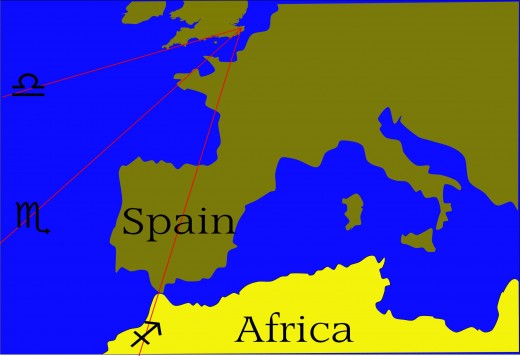
And of course that's exactly what we do find. Sagittarius is also the sign of higher learning, spirituality, wisdom etc, etc. And our Sagittarius alignment cuts right down the middle of Spain.
"Whatever makes a kingdom great, whatever tends to refinement and civilization was found in Moorish Spain." Stanley Lane-Poole.
Spain was invaded in 711 by African Moors (Morrocans) who were far more learned than the Europeans. They had a profound influence upon Spain and the whole of Western Europe. It has been said that they laid the foundations of the Renaissance that brought Europe out of the intellectual gloom of the Middle Ages. In the 10th Century Cordoba was the capital of Moorish Spain but also one of the most important cities in the world, rivalling Baghdad and Constantinople. Cordoba had a population of half-a-million, street lighting, 50 hospitals with running water, 300 public baths, 500 mosques and 70 libraries – one held 500,000 books. This at a time when London had an illiterate population of around 20,000 and had all-but forgotten the advances made by the Romans centuries before.
2nd biggest desert in the world
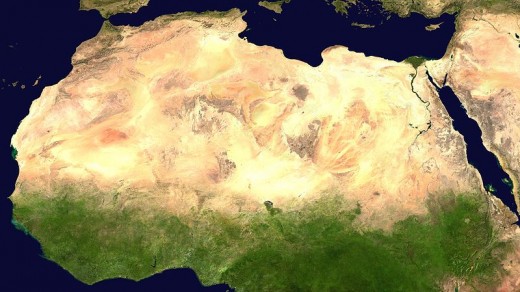
Like the arrow of Sagittarius we'll fly on to fresh targets..... across the Straits Of Gibraltar and right into the 2nd biggest desert in the world, the Sahara. This continues or expands on the theme of Dungeness only in a much bigger way. Dry and hot ain't the word for it..... and though it's true that in the olden-days we all carried spears and bows and arrows, we don't any more. But such weapons or tools are still in use here in Western North Africa.
Our alignment includes the following African Nations: Morocco; Algeria, Mali, Guinea, Sierra Leone, Burkina Fasso, Benin, Togo, Ghana, Liberia, Mauritania, Senegal and Gambia.
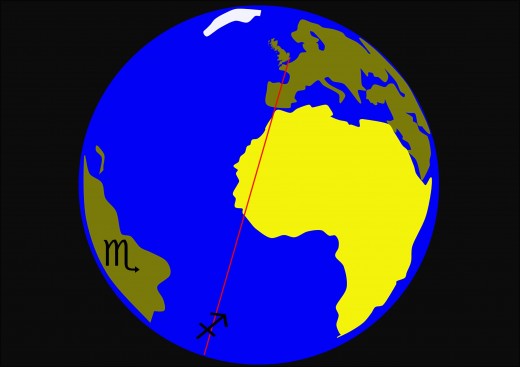
And on we go straight to the biggest desert in the world, Antartica and the geographic South Pole. I've put the arrow symbol of the sign of the arrow, dowel, stock more-or-less where the actual pole or spindle is located.
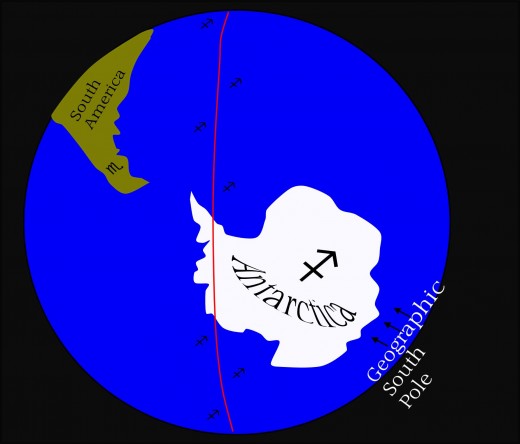
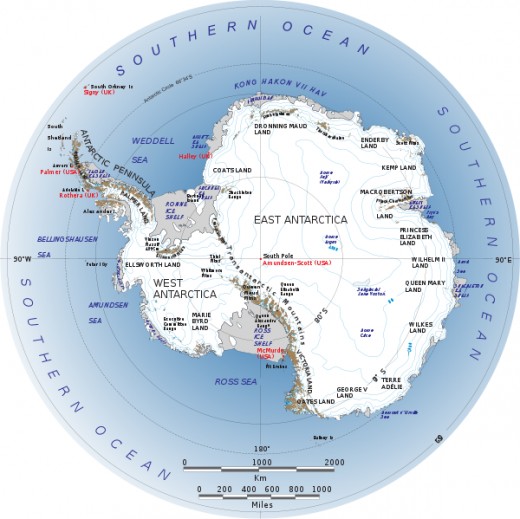
Well, that's quite fitting innit? The shaft of an arrow is the South Pole. And given the facts related above, that Sagittarius leads us up-to the Winter Solstice, and here we discover that Sagittarius points straight at the coldest place on the planet. It's appropriate, and there's not much more I can say about it.
So now we'd better nip back along the alignment to the hub where we started, and draw another line - the Capricorn line.
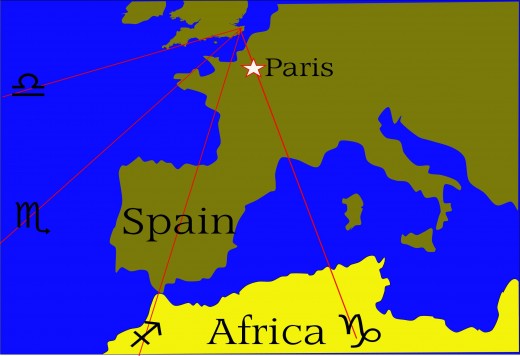
As you can see, after leaving Blighty and splashing across The Channel, one of the first places of note that it 'hits' is Paris. Hmm, methinks of goaty-voiced crooners when I think of Paris.... but we'll come back and have a look at France and its relationship to the sign of the goat, in a moment, after we've had a very quick skim over the UK section of the alignment.
This is a very short span of the countryside, 14 miles (2 X 7) from the trinity of standing-stones in St Augustine's Abbey, to the equally ruined Christchurch Monastery, in Folkestone. Before we go any further I'll just give you a list of Capricorn's traits and correspondences so you'll know what we are looking for as we billy-goat across the land.
Capricorn: Aspiration; Ambition
Planet: Saturn (old age, senior citizens)
Animals: Goat
Orientation: South
Body Parts: Skeleton; Teeth; Joints; the skin.
Time Of Day: Midnight - 2am
Time Of Year: Winter Solstice; Yule
Tenth House: Ultimate Achievement
Element: Cardinal Earth
Metal: Lead
Tarot Arcana: 15 The Devil; and 10 The Wheel Of Fortune
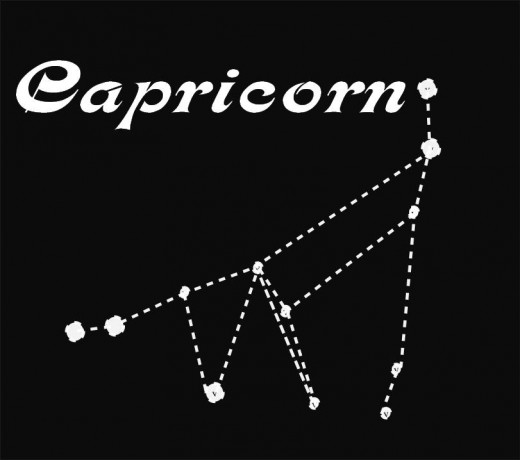
The truth is, expecting to find such Capricornian elements laid-out on the landscape seems like a tall-order, I admit. But I have to tell you it was easier than you might think. Much easier.
I'll skip an awful lot of it though - not because it ain't there either. I'm skipping it because it IS there - and there just ain't the time to look at it all.
So, coming out of the Abbey and heading south along the alignment the first notable place we come across is Smith's Hospital Almshouses... if your minds tuned-in you'll recognise why this is significant - an "alm" is a gift given to the poor. A 'gift' is what Christmas/Yule are all about. You only have to be looking for the significances tuned to the wavelength of the goat, Capricorn, and the world takes on a different meaning. Travelling about in a car or on a bicycle becomes truly interesting. I recommend everyone to take-up astrology. Get some meaning out of formerly dead maps.... for me, a map is a story-book telling an amazing, yet familiar story. I digress - back to the map.
These innocent-looking place-names are next - the first village has neither Bart nor Homer living there, even though it's called Springfield. "Spring" means to arise to come forth to appear suddenly. In astrological terms: the solstice, the place where the year springs-from. In religious terms the Nativity is the beginning, the start of a certain story. Field - the suffix has an interesting story to tell all on its own - 'field' is from 'fell,' that being the term for chopping down a tree. The axe-man would fell an area of trees and the area was named 'a field,' because it was attained by felling. so 'fell' is of the 'fallen,' and the fallen are the dead. What I'm trying to utter is that 'field' is referencing the 'dead,' and that is appropriate at the Winter-Solstice, isn't it? The Sun has died and now springs back to life - is born anew! (see above). In the village are some farm-labourers dwellings called Cowhouse Cottages. the casual observer would think nothing more of it. But.... when you're looking for mythological, astronomical or zodiacal clues - as we are here - then we only have to remember THAT story and we know that a certain someone was born in a stable or "cow-house." Additional details are added by the name of the nearby forest called Haystack Woods - hay is food and bedding, and is generally served up in a manger, which takes us back to a certain winter's tale.
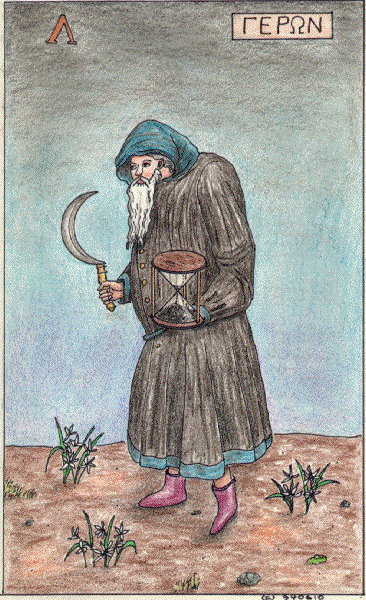
Hodes Farm. "Hode" is a hood.Why would 'hood' be appropriate? Well - it's midwinter we're talking about - and Yule. 'Hood' comes from the old-word for 'head' and Capricorn is the sign of authority figures - 'hode' or 'head' also refers to an authority figure. Cement Cottages. Capricorn is the sign of rocks and stones. Cement is a man made rock, but it is a rock nevertheless.
Capricorn is the sign of judges and priests. So finding a place called Parsonage Farm is perfect. A parsonage is the residence of a member of the clergy, provided by the church. Moving on we drive along the Old Palace Road. In our old tongue, 'old' is eald, The eald is the 'old god' of the pre-Christians - the Devil ! He is represented by the Tarot card XV The Devil, representing Capricorn, the cloven hoofed goat.
Cobham. Cob In the old tongue was a mixture of clay and straw, made into a brick and used for building. It is also a short legged, thickset horse.... a winters tale and a pony.....Chalkpit Hill. The pit is - like the abyss - the Winter-Solstice. Chalk is of the rocks, and consists of marine animal bones, and of course Capricorn is the sign of the bones, and the fish-tailed goat. It's really quite amazing how everything fits so perfectly into the Capricorian pattern. As I said above about Parsonage Farm, this house-name is perfect - Court House. Saturn, ruler of Capricorn is known as the lawgiver or lawmaker.
Bifrons Cottages threw a spanner in the works, I thought..... "Biferan" means to feed. I couldn't work that one out.... but then I realised that that was pretty much the first thing that the baby Jesus did, suckled the paps of his holy mother. This is also what everyone else does at the Solstice or Christmas feast, the time of maximum poverty and hunger in the natural world. From this day forward the weak baby Sun (baby son) must feed and grow, feed and grow.
Aspinal Close. "Aspylian" is Anglo-Saxon for to wash oneself, which is referencing the rite of purification known as Advent, the forty day period of fasting leading to Yule, begun on 11th November. Cramb Close. "Crammian" to cram or stuff. St Mary's Road. Of course the baby's mum - Virgin Mary. Lydden is leaden. Lead is the metal of Saturn, the ruling planet of this sign, Capricorn the goat. Then the map gets a little more festive.... there's a place called Hollybush Corner, and I don't need to tell you the significance of holly at this time of the year, do I? But what about Bonny Bush Hill? Is that a reference to the holly too? And isn't 'bonny' a description of a child? An infant?
St Denys' talking head
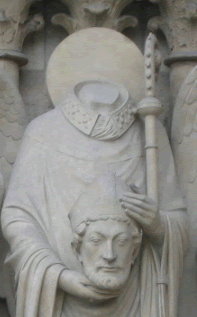
I'm skipping many places now for the reasons stated above - too many of them A few more though: Acrise is a good one: The prefix Ac is the oak, and the oak is a symbol for the Monarch," so, ac + rise means the King has arisen or the king rises. Another easy one is the lane known as Winterage Lane - I hardly need explain what it means...- winter + age.
Just before we get to the UK end of the alignment in Folkestone, we pass through the town (village?) called Hawkinge, and that's a classic pointer to the winter age - the prefix 'Haw' is of 'frost,' plus 'king(e)' which needs little explanation really. So Hawkinge means the Frost King, or the King Of Winter. Fancy that!
In Hawkinge is Saint Denys Road - and he is the Patron Saint of Paris, beheaded on the highest hill at Montemarte (Martyrs Mountain). It makes me wonder why they'd name a road after him here, in Kent, England? They couldn't stop Denys preaching even after his head had dropped into the basket. He picked it up and went for a stroll, preaching the good word as he went. After a couple of miles he finally shut up and fell dead, which is where they built a shrine to him, which is called the Basillica Of St Denys, where the Kings of France are interred. I suppose it's just a coincidence that our alignment heads directly for Paris and Montmarte? Surely our street planners aren't aware of these alignments? Are they?
I think I'll just remind you that on the opposite alignment - the Cancerian one (part 2), the County Town of Bury St Edmunds is included there, and Edmund, you'll recall, had one of those heads too - he spoke to his companions after he'd been decapitated.... it's about the Sun not being extinguished by death... carry on regardless.
Hockley: According to Etymonline.com, the hock is a joint in the hind leg of a horse. Capricorn rules bones, teeth, the joints, particularly the knees.
Sole is a village name... do I need to decipher? Oh, alright then. Sol is the Sun, yeah? Winter-Solstice and Christmas are all about the Sun's death and birth, aren't they? Sol is the source word for the soul.... the story of the Sun's death and birth are actually metaphors then.... for a story about YOU....
Arpinge: Harping? "Ar" means messenger, herald, prophet, angel, and are usually pictured with a harp. Shuttlefield is another subtle reference to the Winter-Solstice: shuttle back and forth, go and return. Peene is 'penn' and that's a pen or fold. 'Folds' pertain to sheep.... while shepherds watched their flocks by night etc, etc.
Argrove Wood mentions the other essential component in any nativity story.... the prefix 'ar' is Anglo-Saxon for messenger, herald, prophet,and angel... the suffix 'grove' was the place where the druids went to for mistletoe. As we get into Folkestone there's even an area called Gibralter. Why would this place in Kent be called that? The only possible explanation I can come-up with is the astrological fact that we are in the Capricorn segment of a landscape zodiac - Capricorn 'rules' rocks and high places. Gibralter is a rocky high-place. It makes perfect sense but the problem is that no-one in the planning departments (they named these places) is aware of this global landscape zodiac, are they?
Coolinge is obviously cooling, and I suspect I don't have to explain why that's so appropriate?
Millpoint with an apostrophe thrown in:Mi'll-point, would be middle point, as in midwinter.
Capel Le Ferne 'Cappa' is a cape, cap or hood. 'Fernes' is passage, transition, passing away. Hoods are 'heads,' as explained.... and the 'head' of the solar-system appears to be passing away..... undergoing a transition.
The Leas would be the leo’s, or the lions. The Sun is the lion who is honoured at Winter-Solstice, he who has fallen and is to rise, who was dead and yet lives!
Enbrook - 'broc' is affliction, adversity, care, disease, sickness. 'En' is end. It means the end of affliction. At the Winter Solstice the Sun is magically healed and revivified, and begins to return to the northern hemisphere and the Tropic of Cancer.
Satmar, any astrologer would immediately see this place-name as a direct reference to the arcane art. 'Sat' is Saturn, ruler of Capricorn, and 'mar' is Mars, which is 'exalted' in this sign. In conjunction these two opposing energies perfectly represent the situation at the Winter-Solstice - apparently cold yet full of energy and light, dead yet full of potential life.
Cheriton is cherry or cheery-town. At Yule we're all supposed to make a special effort to be cheery, and taste the fruit of the year, the cherries, etc. Cherry is also a metaphor for the mid-winter sun, small and red. . The Channel Tunnel is typically Capricornian, cut through the rocks beneath the sea bed. It emerges from France here, in Cheriton.
The so-called prophet of the science age, HG Wells, the Godfather of Science Fiction, built and lived in Spade House in Folkestone, (spades make holes in the ground). Folkestone appears in one of his less-well-known works, The New Accelerator (1903), in which a scientist invents a drug that excites the human nervous system to work at thousands of times its normal capacity. After taking a dose of this Victorian LSD, he walks along Folkestone Leas observing the world in a state we now commonly call psychedelic.
There's even a Folkestone street called Horn Street.... I should have mentioned this before - what with the Rude Man alignment and everything.... the word Capricorn is goat horn in Latin......
Father Tooth
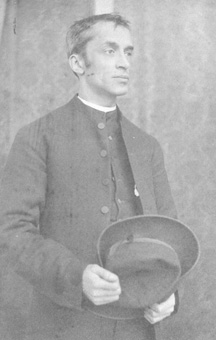
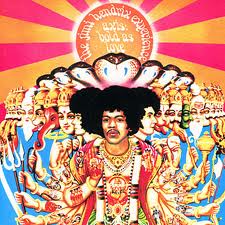
Folkestone is itself a perfectly Capricorn place-name. Folk's stones is vernacular for bones and teeth. They are the stones that grow within the folk, for what are teeth if not little organic stones, and what are bones if-not slowly growing rocks?
On the matter of teeth - Father Arthur Tooth was a Ritualist Priest, and curate of St. Mary's Church from 1865 to 1868 - old Arthur got busted and sent to jail in 1876 for "proscribed liturgical practices." We'd have never heard of him otherwise - or his Capricorn name - tooth!
Charles Dickens, the writer of that most Christmassy tale, A Christmas Carol, lived at Albion Villas in the 1850s. Never a yule goes by without Mr Scrooge undergoing his transformation from niggardly miser to bountiful benefactor. To my mind - given the season - this is really a tale about the transforming of the Sun, though I doubt that Charlie thought so.
William Harvey, the dude that discovered the circulation of the blood, was born here in 1578. In modern astrology the following sign, Aquarius, governs or 'rules' the blood circulation, but it must be reckoned with that in former times Capricorn and Aquarius were one and the same sign. Then the new-fangled telescope revealed the existence of Uranus on March 13, 1781, and since then, the signs have been distinct from each other. However, many traits and similarities still exist between them, as you'd expect.
Rock On.
Festively-named Noel Redding (December 25, 1945 – May 11, 2003, Capricorn) was the bassist for The Jimi Hendrix Experience. Hendrix himself came and stayed at Noel’s mums for Christmas one year at the height of his fame. Rocks and music are synonymous with the town, for Redding is not the only (rock) musician of note to emerge from the chalk hills of Folkestone.
Pete Kircher, rock drummer extraordinaire, worked with Noel on a number of occasions and also played with The Honeybus and Status Quo.
Heavy rock drummer Thunderstick, ex Iron Maiden and Samson - Folkestone based since the mid nineties - is famous for playing in a cage, and that's typically Capricornian.
Leas Cliff Hall
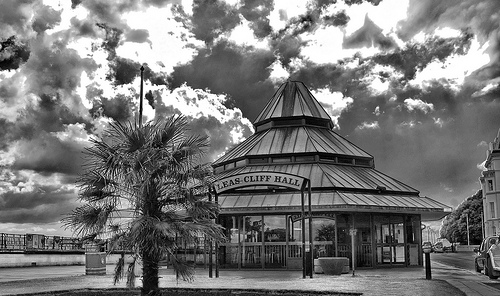
The founder of the well known company that specialises in senior citizens - Saga - Sydney De Haan, started up the company when living in Folkestone. Saga is involved in research which investigates alternative healing for alzheimer’s etc.
I could go-on for several hours about Folkestone - but it's a big world and this influence don't stop here, so we've gotta get-on with it, and see where it goes.
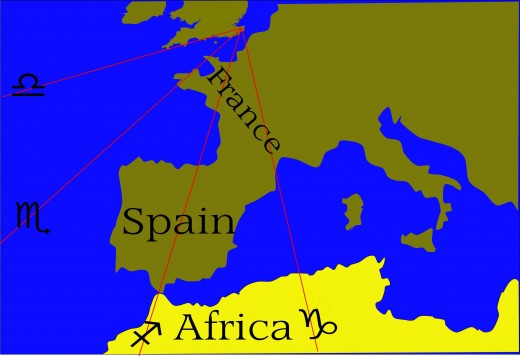
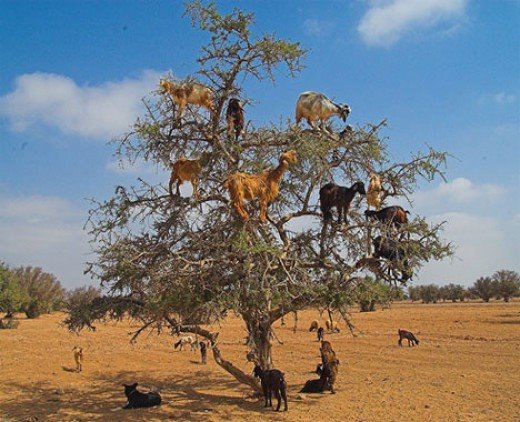
Straight across France....now... France has a few of our alignments passing through and morphing their people - and their landscape.... it has a little bit of Scorpio, a tad of Sagittarius and a whole-lot of the goatee-sign, Capricorn. It's probably just my English perspective but Capricorn and France seems somehow.... appropriate. Gourmets and good-wine, good food. and fully developed, goat-like appetites.... I think Capricorn - I think France. Does it seem appropriate to you? The goat who'll eat anything? The goat that smells a bit.....? D'ya see where I'm coming from?
Well..... Capricorn is associated with high-places and the alignment from Canterbury goes straight over the Alps.... and there's no shortage of goats around these parts ...
Then we go straight across the Mediterranean and into Africa... which includes Tunisia, Libya, Niger, Chad, Central African Republic, Zambia, Kenya Zimbabwe,Gambia, Senegal, Mauritania, Botswana, Namibia and South Africa - there are others not listed here....
Capricorn as ruler of Africa seems to me even more appropriate than France. Saturn, the planet of rulership, is associated with old age, long - hard struggles, poverty, slow development, retardation, the colour black, limits, hunger, experience, maturity, humour, hard-weather, bones, teeth etc etc. and of course, goats. I have to say that to me, the continent of Africa sort-of resembles a skull - of either a goat or human. In Namibia there's even a stretch of coastline called Skeleton Coast.
About now would be a good time to remark that the recent revolutions and wars going-on in some of these nations might be partly or wholly due to the astrological fact that the Scorpionic planet, Pluto, the planet that governs transformations, death and resurrection, rebirth - has been in Capricorn for the past couple of years. To me it explains everything, because, as I've been saying, Africa is influenced by Capricorn, and Saturn, the ruling planet. And let's take America for an example- as I've shown in earlier articles, the USA is governed by Libra. And the Capricorn planet - Saturn - is currently in Libra. Saturn is contraction, limitations, boundaries, karma. The US President is descended from Kenyan stock..... Africa is in revolution because Pluto is in Capricorn - Africa's zodiac sign. I say that the USA is experiencing a 'slow-down' and contraction because Saturn is in Libra, America's zodiac sign.
So.... moving on now.....
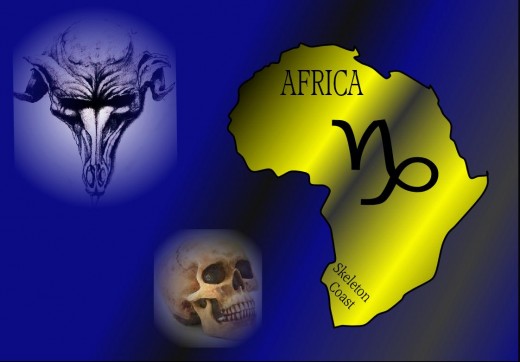
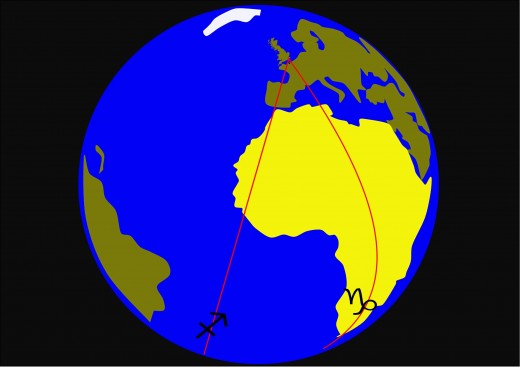
We leap off the tip of South Africa, cross the Southern Ocean and then we're on that high plateau (two-miles above sea-level.) again, Antarctica....
Sagittarius and Capricorn - the signs of the midwinter and all that darkness, are, in this global Landscape Zodiac, centred in Canterbury, aligned with the coldest. driest desert on the planet. And here's a weird and appropriate thing: back there in England we are talking about the longest night of the year, but here at the most southerly continent we are talking about the opposite thing - the longest day. In September, the Sun rises, and then doesn't set again until March - long enough?. It is the Antarctic Summer.
Nowadays, when I stand on The Street Of Stones (see parts 1 & 2) in Tankerton Bay in Whitstable, my mind gets fair-boggled. For not only am I in alignment with the Magnetic North-Pole, I am also, at the same moment, in alignment through Canterbury's spindle, via Folkestone and Paris, the Continent of Africa and wind-up here, the Geophysical South Pole! OO er, it's no wonder I feel all..... aligned, and that. You should try it. It's good.
